Physical Address
304 North Cardinal St.
Dorchester Center, MA 02124
The term imperforate anus is a misnomer; it is commonly used to refer to a spectrum of anorectal malformations, ranging from a benign defect that requires a minor operation and results in an excellent prognosis to complex malformations with a high incidence of associated defects requiring sophisticated and specialized surgical procedures with less than optimal functional results. Most cases are not actually “imperforate,” but rather have the rectum ending in a structure such as in the urinary or gynecologic tract. Since the mid-1980s, significant advances have been achieved in pediatric surgery that allow for a better anatomic reconstruction of these defects, preserving other important pelvic structures. Yet, at least 25% of all patients born with these defects still have fecal incontinence, even after a technically correct surgical repair, and another 50% have other functional defecation problems, mainly constipation and varying degrees of soiling. , We have made great strides in anatomic reconstruction but are still challenged in consistently obtaining an excellent functional result. These malformations occur in about 1:4000 to 1:5000 newborns. In general, the chance of having a second child affected by this type of defect is about 1%. This number may change if one considers each type of anorectal malformation separately.
A classification presented here ( Table 55.1 ) is based on therapeutic and prognostic factors as well as the frequency of associated defects. It was designed to help the clinician increase the index of suspicion and to establish therapeutic priorities.
| Males | Females |
|---|---|
| Perineal fistula | Perineal fistula |
| Rectourethral fistula | Vestibular fistula |
| Bulbar | Imperforate anus without fistula |
| Prostatic | Rectal atresia |
| Rectobladderneck fistula | Cloaca |
| Imperforate anus without fistula | Complex malformations |
In perineal fistula, the rectum opens into the perineum anterior to the center of the sphincter, into a usually stenotic orifice. In male patients, the perineum may exhibit other features that help in recognition of this defect, such as a prominent midline skin bridge (known as a “bucket-handle” malformation) or a subepithelial midline raphe fistula that looks like a black or white ribbon because it is full of meconium or mucus ( Fig. 55.1 ). These features are externally visible and help in the diagnosis of a perineal fistula. This is the most benign of anorectal defects. Less than 10% of these children have an associated urologic defect, and 100% of them achieve bowel control after proper treatment, if they have a normal sacrum and no evidence of a tethered cord. ,
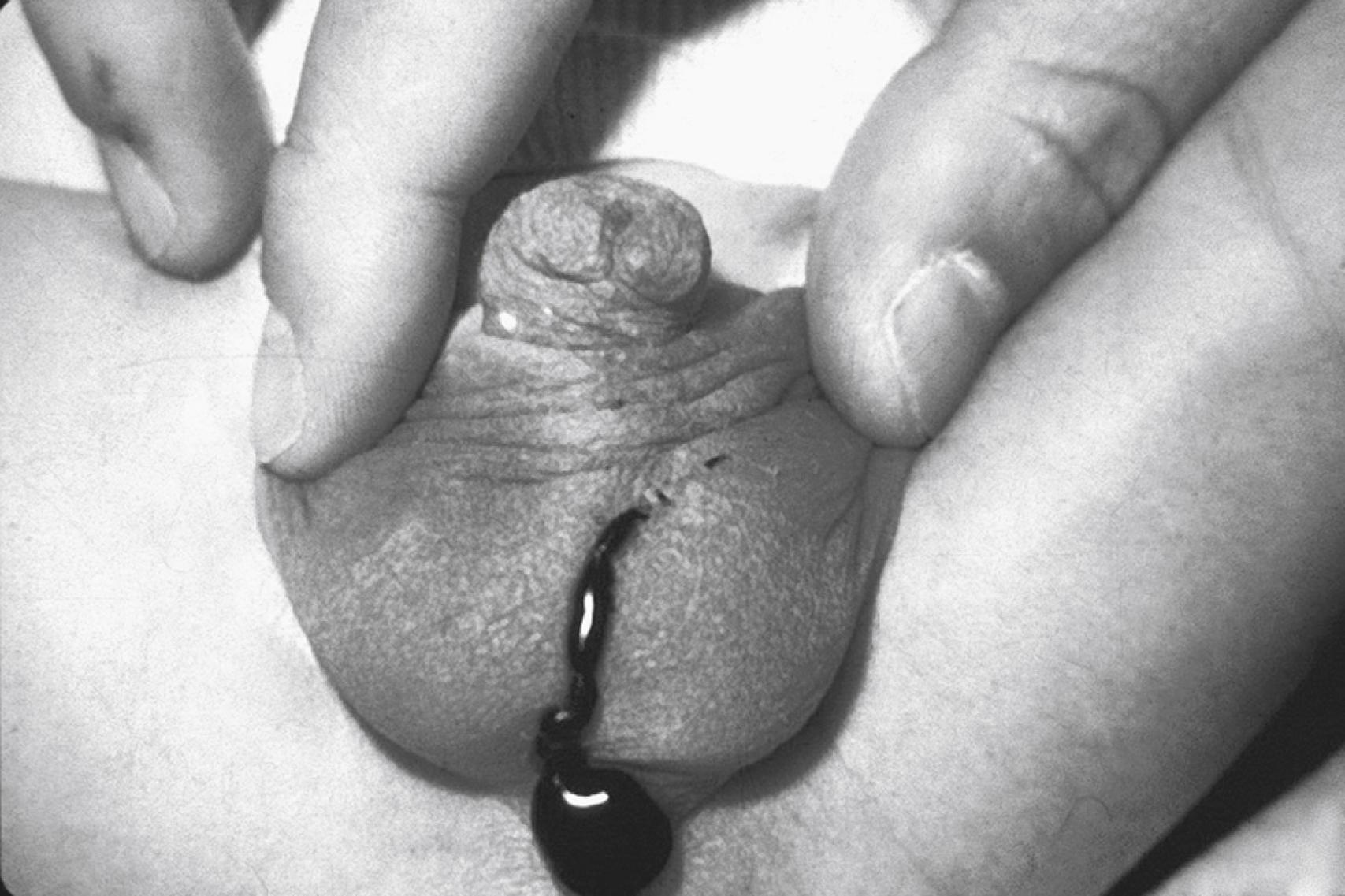
Of interest, this group of patients has the highest incidence of constipation, a disorder that should not be underestimated, as discussed later in this chapter. The operation to repair these malformations is a relatively simple anoplasty; it usually is performed during the neonatal period without a protective colostomy. Even when this is considered a relatively easy procedure, there is a risk of provoking a urethral injury in male patients. Therefore, this operation should always be performed with a urethral catheter in place.
The rectourethral fistula is by far the most common defect in male patients. The rectum communicates with the posterior urethra through a narrow orifice (fistula). This fistula may be located in the lower posterior urethra (bulbar fistula) ( Fig. 55.2 ) or in the upper posterior urethra (prostatic fistula) ( Fig. 55.3 ). Eighty-five percent of patients with rectourethral bulbar fistula achieve voluntary bowel movements after the main repair, but only 60% of those with rectoprostatic fistula do so. , About 30% of patients with bulbar urethral fistula and 60% of patients with rectoprostatic fistula have associated urologic defects. The quality of the sacrum usually is good in the former case but frequently is abnormal in the latter. Most of these patients must receive a colostomy at birth, with definitive repair done at 2 to 3 months of life.
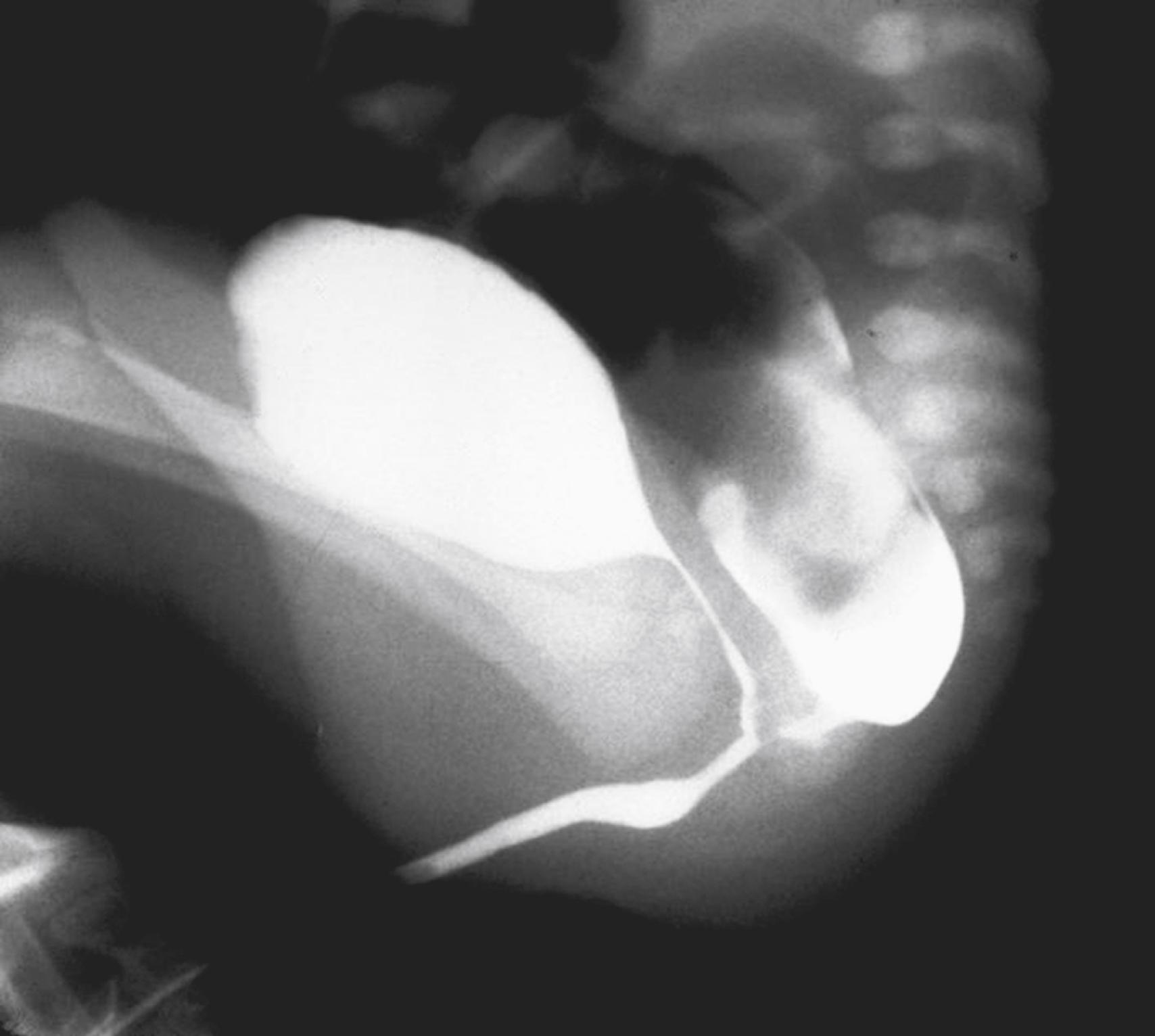
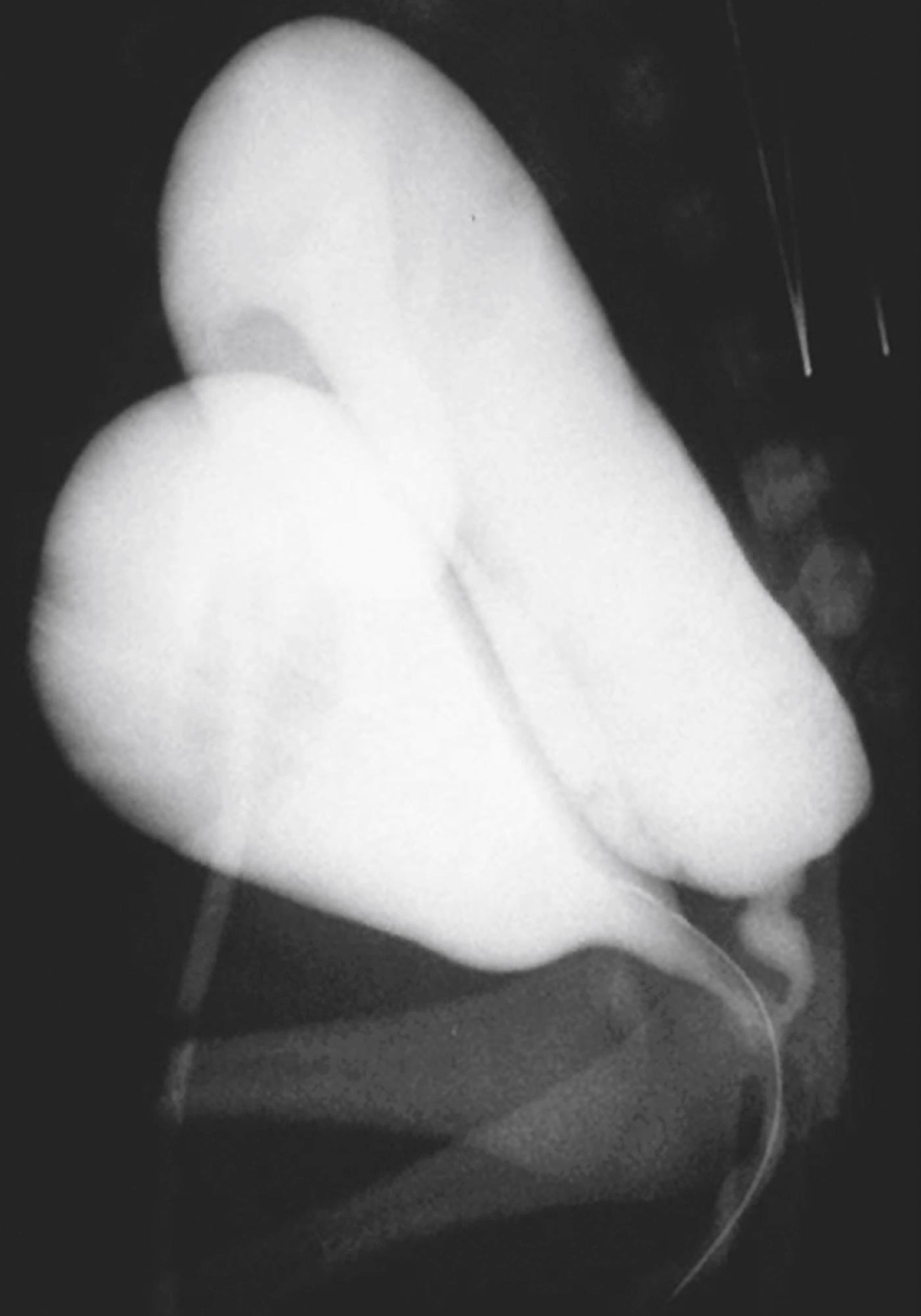
The rectobladderneck fistula is the malformation with the highest location in the rectum of male patients. The rectum opens into the bladder neck ( Fig. 55.4 ). Ninety percent of these patients have significant associated urologic defects. Only 15% achieve bowel control after the main repair. , The sacrum usually is of poor quality. In these patients, the repair includes a posterior-sagittal approach plus a laparotomy or a laparoscopy to reach a rectum that is located high in the pelvis. , The perineum in these patients is usually flat, meaning that they do not have the normal midline groove and one cannot see an anal dimple ( Fig. 55.5 ).
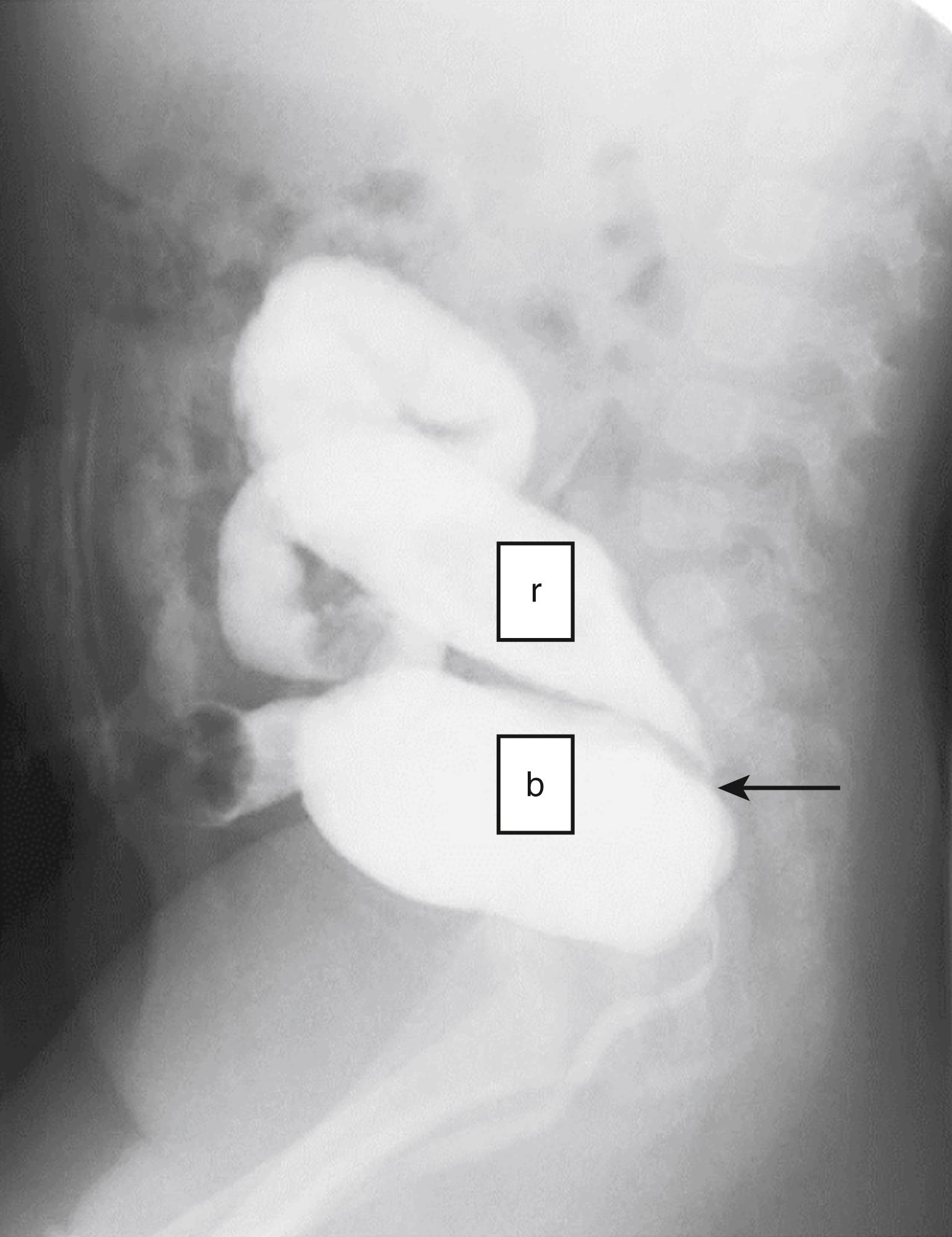
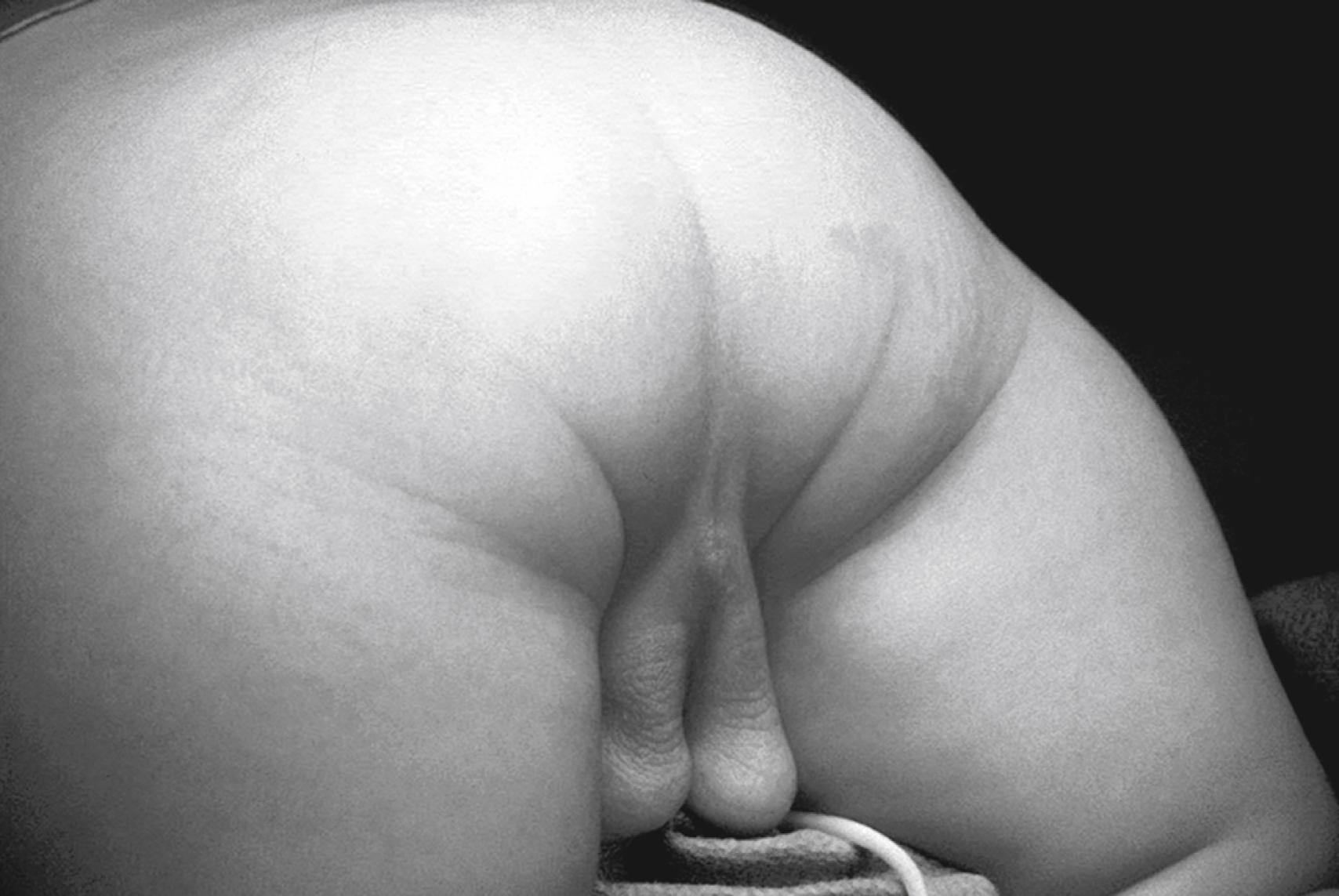
In imperforate anus without fistula, the rectum ends blindly, without a fistula, approximately 1 to 2 cm above the perineum, usually at the level of the bulbar urethra. The sacrum and sphincter mechanism are usually good, and about 80% of these patients achieve bowel control after the main repair. , , Approximately 50% of patients with this defect have Down syndrome. Conversely, 95% of patients with Down syndrome who have anorectal malformations have this specific type. With or without associated Down syndrome, children with this defect have a good functional prognosis. This malformation can be repaired primarily at birth, without a colostomy, provided the surgeon has enough experience and the baby is in good condition. Although not connected to the distal rectum, the urinary tract is intimately attached to the urethra, and great care must be taken not to injure the urethra.
In this rare defect, the patient is born with a normal-looking anus externally, but an attempt to take the rectal temperature discloses an obstruction located 1 to 2 cm above the mucocutaneous junction of the anus. The sphincter mechanism in these patients is normal, as is the anal canal. Associated defects are almost nonexistent except for presacral mass, which must be screened for. The prognosis is excellent when there is no presacral mass, and 100% of these patients achieve bowel control. , The repair involves an operation called a posterior-sagittal anorectoplasty (PSARP), with a diverting colostomy, initially done at birth.
Become a Clinical Tree membership for Full access and enjoy Unlimited articles
If you are a member. Log in here